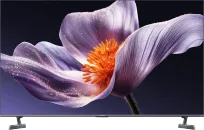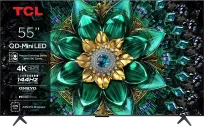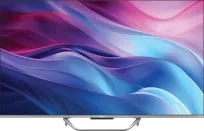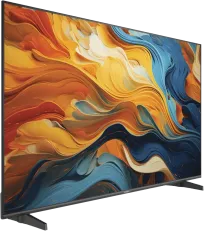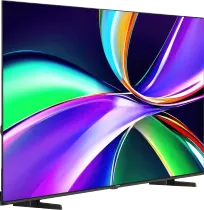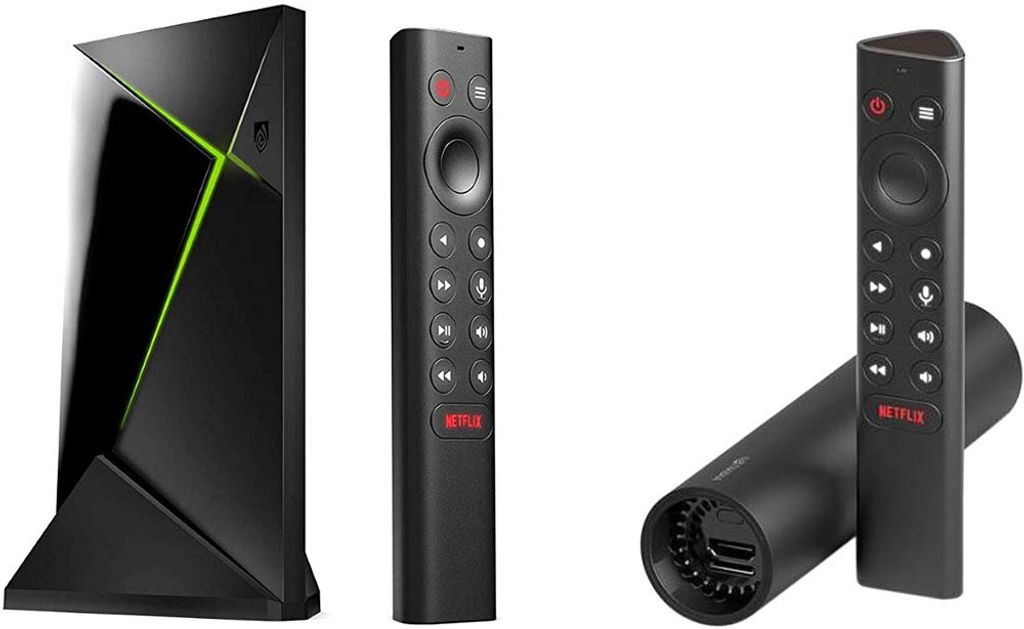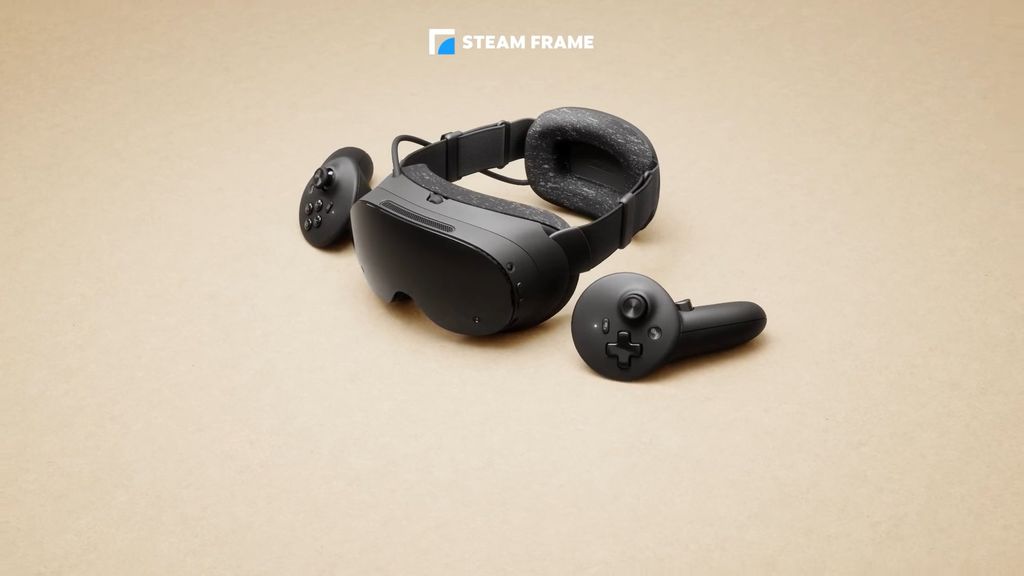
The year 2025 looks especially interesting for Philips. After a rather tumultuous 2024 – the launch of the new operating system Titan OS and mixed reviews of some models – expectations for the new lineup are high. Have the most significant shortcomings been addressed? Is Titan OS finally entering a mature phase? Or perhaps the changes also involve the screens themselves and the quality of the image?
We will answer these questions in more detail in full reviews, but we already know one thing – the first models from the 2025 series have just hit the stores, and the prices are... surprisingly reasonable. So let’s go through Philips' offering for this year.
Philips The One 2025 (PUS9000 / PUS9010 / PUS9060) – the most popular model in a new edition
The "The One" series has been one of the cornerstones of Philips TV sales for several years. It will be no different in 2025 – the model designated as PUS9000 (also available in stores under the names PUS9010 and PUS9060) has all the makings to replicate the "success" of its predecessors.




On board, we find a 144 Hz panel and Direct LED backlighting. The manufacturer traditionally does not disclose details about the type of matrix – so it's worth being cautious, as it’s likely that this year we have the well-known "matrix lottery" from previous models, where depending on the size, we might end up with either a VA or IPS panel.
The One 2025 runs on the Titan OS, which is said to be in a much more mature version now. There are also features for gamers: full HDMI 2.1, support for VRR (variable refresh rate) and ALLM mode.
Depending on the size, the TV also receives different speaker configurations – 75" and 85" models have 50 W, while smaller sizes come with 40W speakers. A nice addition in the smaller versions will be a swivel stand.
And of course, it includes a 3-sided Ambilight system.
Philips MLED910 / MLED920 – successor to PML9009
The new model MLED910 (also known as MLED920) is the direct successor to the PML9009 series from 2024. In terms of specifications, there are no major revolutions – we still have a Mini-LED type television, equipped with a three-sided Ambilight system and the P5 image processor.




The audio configuration is identical to that of the model The One – 40 W in smaller diagonals, 50 W in 75 and 85 inches. The Titan OS system is also present, and the television supports HDMI 2.1 and gaming features such as VRR and ALLM.
Unlike the model The One, here we can expect better blacks and higher contrast thanks to Mini-LED technology. Has Philips addressed shortcomings like the weak algorithm responsible for local dimming from last year's series? We'll find out in tests – but we hope lessons have been learned!
Philips OLED770 – entry-level OLED for 2025
OLED770 is the simplest OLED television in Philips' range for 2025 and the direct successor to the OLED769 model. It features a 120 Hz panel, supports VRR, ALLM, and full HDMI 2.1 – which is everything you need for comfortable gaming. The specifications suggest that a similar panel has been used as in the LG B5 or Samsung S85F models, which would place this model in the entry-level OLED category with great potential. How will it perform in practice? We’ll find out after the first tests, which will be available on our website soon. Like last year, the television uses a 3-sided Ambilight system.




Philips PUS8000 vs PUS8500 – two basic "eights" for 2025
This year, Philips has prepared two very similar models from the basic series 8 for buyers – PUS8000 (also known as PUS8010) and PUS8500 (also available as PUS8510 or PUS8560). At first glance, the differences are minor, but if you take a closer look, there are several significant details.
PUS8500 is labelled as a QLED television, which suggests a wider colour palette and greater colour saturation. The PUS8000 does not have this label – at least for now – so we can assume it is a standard LCD panel without the additional layer of quantum dots / PFS LED filter.






The second difference is the support for HDR formats. In promotional materials, PUS8500 is set to receive support for Dolby Vision and HDR10+, while PUS8000 is limited to the open format HDR10+. In the context of the rather average brightness of these screens, the presence of Dolby Vision may help in achieving a better effect, especially from streaming services.
However, both models share one thing – they will be the cheapest in the offer of 4K TVs with Titan OS and Ambilight.
Philips PUS7000 and PUS7800 – the cheapest 4K on offer
In the entry-level segment, Philips is launching two series marked "7" in 2025 – PUS7000 and PUS7800 (also known as PUS7810). These are the simplest 4K TVs in this year's offering, stripped of the Ambilight system but equipped with Titan OS and support for dynamic HDR10+ metadata.
Similar to the series 8, the main difference between the models is the application of a QLED layer. PUS7800 is expected to offer a wider colour gamut thanks to an additional quantum dot filter, which is not found in the base series PUS7000.
These are models for those looking for the cheapest possible 4K Smart TV from Philips – no frills, but with an up-to-date system and support for HDR formats or Dolby Atmos.
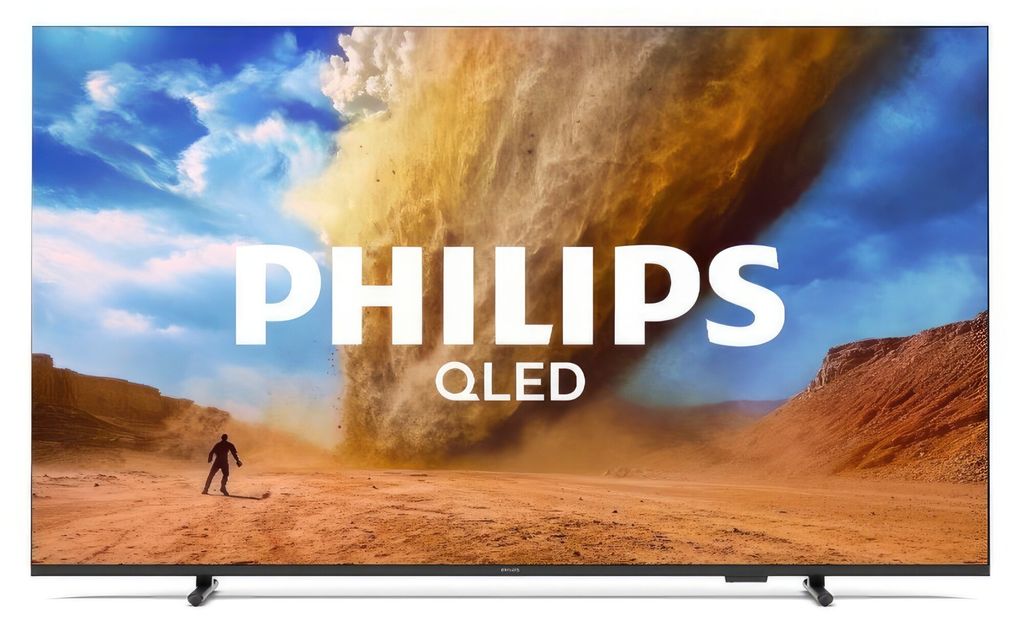





Little One to the Rescue – 32 inches with Ambilight
In 2025, Philips didn't forget about... the smallest screens. The range now includes a new 32-inch PFS6900 TV, aimed at those who really need a small receiver – perhaps for a kids' room, the kitchen, or a holiday home.



The screen has a resolution of Full HD (1920 × 1080), runs on Titan OS, and comes with a remote that has Smart functions. However, the biggest surprise is the presence of the Ambilight system – rarely found in such small models.
Philips clearly targets this TV at younger users, who associate the brand with colourful LEDs. And it's no wonder – such an addition in a small TV can make a bigger impression than any "Smart" feature.
PS. Let us know if you want to see tests of 32-inch TVs with us in 2025!
Philips TV Prices 2025 – How Do They Stack Up?
We won't go into detail about the exact prices of each model – especially since they are similar or only slightly higher than those we observed in comparable models from the 2024 range. In many cases, the differences are within a few %, and sometimes the price is even identical.
However, this does not change the fact that, compared to the competition – particularly the Korean brands – Philips 2025 is looking very attractive. In direct comparison with LG and Samsung models, the differences can reach as much as 20–30% in favour of Philips, with very similar specifications. This can be crucial for those looking to buy a "current" TV.
Philips is attacking with prices.
Currently, shops have mainly seen the basic models from Philips' 2025 offer, ranging from the cheapest TVs in the 7 and 8 series, through the new The One, to the interesting, affordable OLED770 and the unusual 32-inch "little one" with Ambilight. It's fair to say that the starting prices are exceptionally well positioned. (This doesn't mean that it's not worth picking up last year's models. Our current overview of the most interesting promotions for 2024 can be found below). Looking at the current pricing of Korean competitors – LG and Samsung – it's hard not to get the impression that Philips wants to start the year aggressively. In many cases, we're talking about a difference of even 20–30% compared to their Korean counterparts. Will this strategy bring success? We'll find out in the coming months, but if Titan OS proves to be more stable, and the picture quality matches the competition, Philips might seriously shake things up in the budget and mid-range segment.
 Maciej Koper
Maciej Koper
